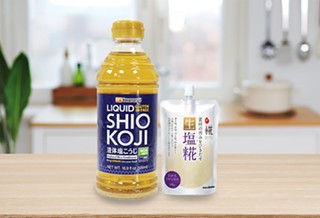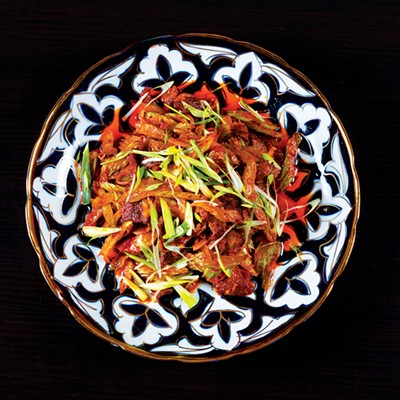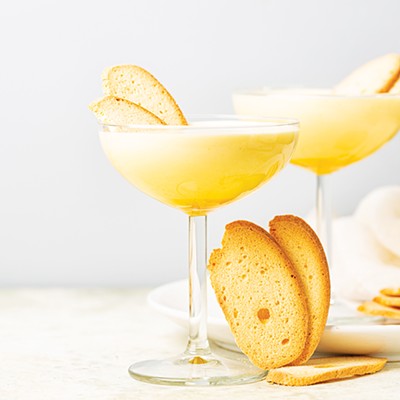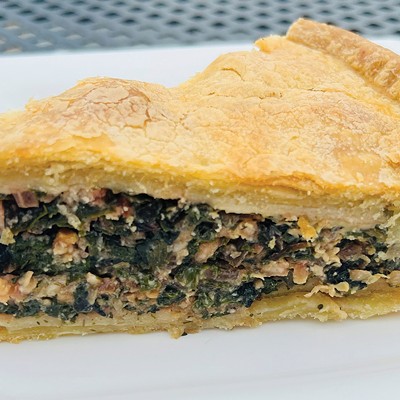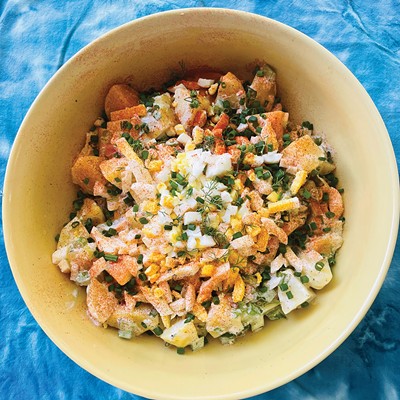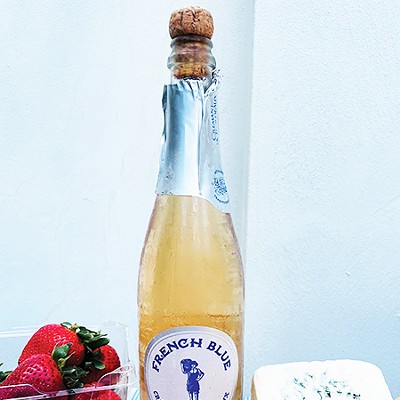I've really gotten deep into LSK recently. It's been helping me unlock potentials that have always been there but I've never before noticed. I'm discovering flavors and aromas and colors that I've never experienced. It's really been transformative!
I'm not talking about micro-dosing with a new psychedelic drug, but rather an ages-old marinade from Asia. LSK stands for liquid shio koji. This slightly salty and sweet sauce is a natural probiotic flavor booster. Thousands of years ago in China, mankind learned to selectively breed and cultivate a strain of fungus known as Aspergillus oryzae. When the spores from this fungus are inoculated onto cooked grains (primarily rice and barley), they grow into a fuzzy white mold that produces powerful enzymes that this mold uses to digest its food. These enzymes break down proteins into their component amino acids, and starches into simple sugars. This mold-covered grain is known as koji. Koji can be preserved by drying, (or in modern times by freezing), to be used in future applications. Koji is the key ingredient used to make miso, sake, soy sauce and rice vinegar.
Shio koji is a mixture of sea salt, steamed grains and koji. It is traditionally used to cure meats, fish and vegetables. Shio koji is a powerful short-term marinade. The enzyme protease, which is produced by the koji, breaks down proteins in meats and vegetables and creates an intense depth of flavors. The enzyme amylase converts starch into simple sugars, making it easier to achieve nice caramelization. These enzymes bring out the natural sweetness and umami in foods. The effect of koji on human taste buds is quite magical. According to food scientist Ali Bouzari, "The magic of koji is that it's a bunch of little happy molecular knives dicing up everything into small bite-sized pieces so that there can be a greater chance it will be the right size and shape to fit into one of your taste receptors."
Shio koji lends savory depth and umami to foods it comes into contact with, thanks to protease and amylase enzymes. This enzymatic activity not only boosts flavor but also has a textural effect on ingredients, making meat and poultry incredibly juicy and tender and firming up fish in a short amount of time. For people watching their salt intake, swapping shio koji for salt actually reduces salt intake because its enzymes increase flavor and umami. Shio koji can be used anywhere you would use salt. The rule of thumb is to double the amount of shio koji that you would usually use for salt.
Shio koji is easy to make at home. The traditional way of making shio koji starts with steamed rice, koji and salt. These three components are mixed together and left to ferment. The result is an aromatic sweet-salty paste that can be used to tenderize foods and unlock flavors. If you are interested in making your own, I recommend googling this article: https://www.seriouseats.com/shio-koji-marinade-recipe. If you are eager to start cooking with it, premade shio koji can be purchased in many Asian groceries, as well as online stores, both as a paste in shelf-stable pouches, or in bottles in a clear golden liquid form.
A rule of thumb is to use 10% of the weight of what you're cooking in shio kogi. For a large chicken, about 4 to 5 pounds, slather about 3 tablespoons in a thin layer all over the bird's skin and let it sit at room temperature for an hour or two before roasting. When you're ready to cook, wipe off excess shio koji from the surface of your food with a paper towel to prevent it from scorching and then cook as you normally would, although you do have to keep an eye on things since koji-treated ingredients do take on color much faster. The meat will caramelize beautifully in the pan and the flesh will be richer and more tender.
More sturdy animal proteins, such as beef or pork, can marinate overnight in the fridge. Delicate fish benefit from a shorter cure, about 15 to 20 minutes. If you let it sit too long, the fish will become mushy. When used to marinate fish, it helps draw out the moisture and firm up the flesh, making it excellent for pan-frying without the risk of it flaking apart, as well as seasoning the flesh all the way through. When you marinate with shio koji, you will not need to season with any additional salt.
Shio koji is great for grilling vegetables. Spread a little on top of slices of vegetables such as eggplant, zucchini or mushrooms about 10 minutes before grilling. I like to put the liquid form in a spray bottle and mist the vegetables as they cook.
I also like to make quick pickles by marinating vegetables in shio koji overnight – cucumbers, turnips and daikons work well. After 24 hours, simply wipe away the marinade and eat straight away. A little shio koji added to guacamole brings out more flavor in the avocado and helps keep it from browning.
Shio Koji Marinated Steak
Shio Koji can transform cheap meat from Aldi's into a beautiful steak. The longer you marinate, the more tender the meat becomes.
Ingredients:
1 steak
Shio koji (10% of the weight of the meat)
Preparation:
Note the weight of the steak and multiply this value by 0.10. This will give you 10%. Measure out this amount of shio koji. Make some cuts partially through the steak and coat all over with the shio koji. Place in a resealable plastic bag and marinate for a minimum of 3 hours at room temperature or overnight in the fridge.
Remove the shio koji from the steak with the back of a butter knife and gently wipe with a paper towel. Sear over high heat in a skillet or cook on the grill. Watch closely because the meat will char quickly.
Shio Koji Marinated Celery Root
Marinating celery root wedges in shio koji seasons the vegetable and brings out the natural flavor.
Ingredients:
1 celery root, peeled
cup of shio koji
1 handful of smoked almonds, chopped
1 tablespoon garlic, minced
2 tablespoons unsalted butter
Preparation:
Cut the celery root into 16 wedges and place them into a resealable plastic bag. Add the shio koji and toss to coat evenly. Marinate in the fridge for 2 days.
Preheat the oven to 350°F
When ready to cook, place a heavy skillet over high heat. Wipe the wedges with a paper towel to remove any excess shio koji, then sear until browned on all sides. Transfer to a clean baking dish.
Place the celery root in the oven and cook for 5 minutes, or until cooked through but still slightly crunchy
Meanwhile, heat a pan over medium heat and add the butter. Add the garlic with a splash of water and cook for a few minutes until translucent, but not browned.
Place the celery root wedges on a serving plate and top with the garlic butter and chopped smoked almonds.

